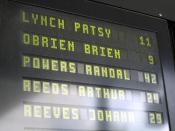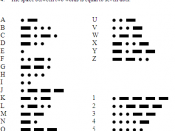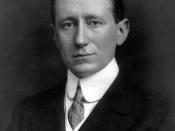Idoh Gersten
Physics
Idoh Gersten
Mr. Zambizi
Physics
March 12, 1995
Radio is a form of communication in which intelligence is transmitted without wires from one point to another by means of electromagnetic waves. Early forms of communication over great distances were the telephone and the telegraph. They required wires between the sender and receiver. Radio, on the other hand, requires no such physical connection. It relies on the radiation of energy from a transmitting antenna in the form of radio waves. These radio waves, traveling at the speed of light (300,000 km/sec; 186,000 mi/sec), carry the information. When the waves arrive at a receiving antenna, a small electrical voltage is produced. After this voltage has been suitably amplified, the original information contained in the radio waves is retrieved and presented in an understandable form. This form may be sound from a loudspeaker, a picture on a television, or a printed page from a teletype machine.
HISTORY
Early Experimenters
The principles of radio had been demonstrated in the early 1800s by such scientists as Michael Faraday and Joseph Henry. They had individually developed the theory that a current flowing in one wire could induce (produce) a current in another wire that was not physically connected to the first.
Hans Christian Oersted had shown in 1820 that a current flowing in a wire sets up a magnetic field around the wire. If the current is made to change and, in particular, made to alternate (flow back and forth), the building up and collapsing of the associated magnetic field induces a current in another conductor placed in this changing magnetic field. This principle of electromagnetic induction is well known in the application of transformers, where an iron core is used to link the magnetic field of the first wire or coil with...


